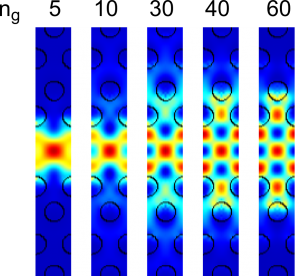Science fiction fans never stop wondering about the consequences of being able to accelerate massive particles to speeds that exceed the speed of light in vacuum. Of course, this is still just a dream, but recent work has shown that it is possible to slow down the group velocity of light by many orders of magnitude or even find situations in which the group velocity exceeds the speed of light in vacuum. Work performed by other researchers and myself has shown that it is possible to slow light to approximately the same speed as that of an automobile; this slowdown occurs by making use of the strong dispersion of the refractive index that occurs near the resonance frequencies of atomic vapors or certain crystalline solids. Our team is also working on the development of photonic crystal waveguides that can similarly slow the velocity of light. The motivation of this latter approach is that it would allow slow-light methods to be integrated into existing photonic-device platforms, leading to increased functionality for applications such as buffers and routers. Another application under development is the construction of spectrometers that contain slow-light elements. Theoretical arguments show that such a spectrometer could be fabricated in millimeter dimensions on an optical chip, yet nonetheless possess the same spectral resolution as a laboratory (meter-size) spectrometer.
One aspect of our work involves the development of methods for controlling the velocity at which light pulses travel through material systems. Applications of these “slow-light” methods include the development of routers and buffers for optical telecommunications and enhanced nonlinear optical interactions. As a specific example, as part of this program we will develop a chip-scale spectrometer that, by means of slow-light methods, can provide the same spectral resolution as that of large laboratory-scale instruments. This spectrometer will be constructed using nanofabrication methods to create photonic-crystal structures that display strong slow-light effects. Such devices have enormous implications for applications such as medical diagnostics and the detection of terrorism threats. Another aspect of our work entails the development of optical methods for quantum information science. Our approach is motivated by the observation that the transverse degree of freedom of the photon constitutes an extremely large state space. Consequently, large amounts of information can be carried even by a single photon. This large information capacity can be exploited in the context of quantum imaging, for instance to provide superresolution and the transmission of complete images using only a small number of photons. Another application, which will be a primary goal of our research, is to develop a quantum cryptography system in which each photon carries many bits of information. This increased information capacity can increase dramatically the transmission rates of systems for quantum key distribution.
